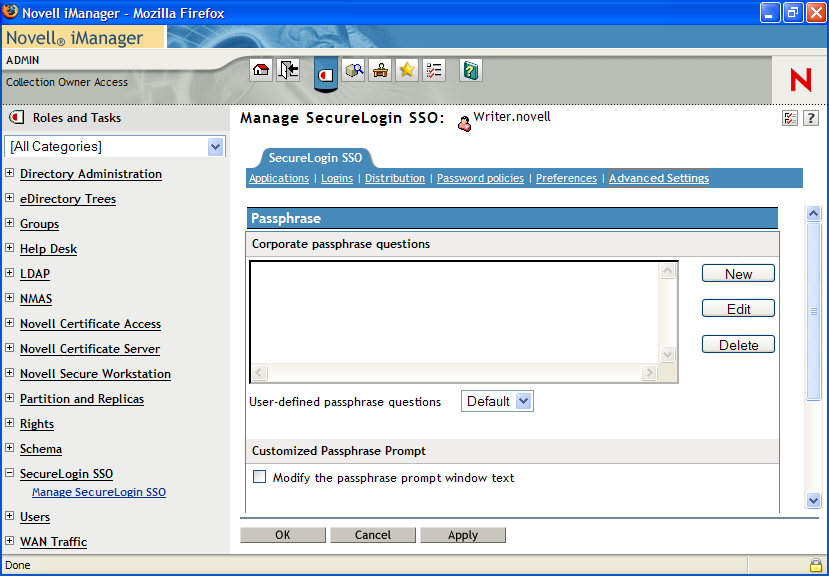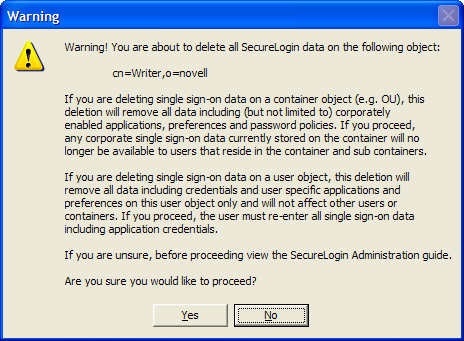2.3 Deleting or Re-setting User Data
If a user has forgotten a network password and the passphrase answer or if the login credential data is corrupted, you must delete all SecureLogin data.
You as an administrator must do this because the user does not have access to the administrative management utilities.
To reset the user data:
-
Access the Administrative Management utility.
For information on accessing the Administrative Management utility see, Section 1.2, Starting the Administrative Management Utilities and, or, Section 1.3, Accessing the Single Sign-On Plug-In Through iManager.
-
If you are using iManager, browse to > > . The Advanced Settings page is displayed.

-
Click in the Datastore section. A warning message appears.

-
Click . The Datastore object is deleted.
If you did not delete the SecureLogin cache from the local cache, before you deleted the Datastore object data, you get an error message.

-
Click .
NOTE:The next time the user logs on, the user will be asked to set up the passphrase question and response you configured and re-enter the credentials for each single sign-on-enabled application.
When you do this, you delete the complete data of the user, including:
-
Credentials, including usernames and passwords
-
Application definitions
-
Predefined applications
-
Password policies
-
Preferences
-
Passphrase questions and answers
WARNING:The deleted data is cannot be retrieved.
Before you delete a user’s datastore object, consider the following important aspects:
The next time the user logs in, he or she is asked to set up the passphrase question and answer. They must re-enter the credentials for each single sign-on enabled application.